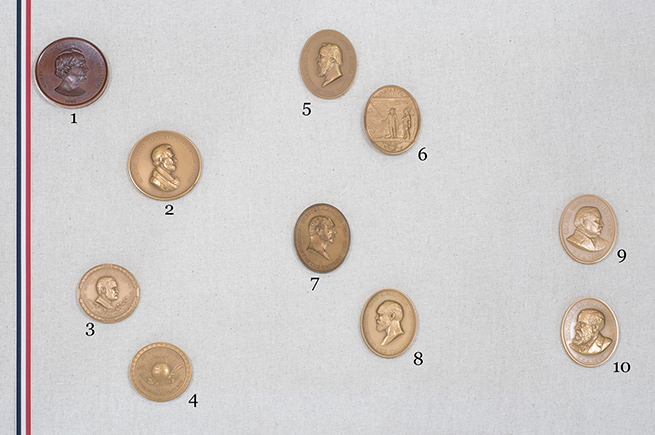
As suggested by the practice of selling the medals to the public, the importance of Indian Peace medals declined over time as the power of the United States grew, colonial competition disappeared and the perceived threat represented by the Indians declined. This decline can be traced through the change in the departments responsible for their issuance – from the War Department to the Department of the Interior, reflecting the change of status of the American Indian nations from independent powers to a domestic problem for the U.S. government. By the second half of the 19th century, diplomacy was no longer considered necessary – medals were simply a way to appease or buy support among individual American Indians and no longer represented formal agreements or obligations with the Native American peoples.
 |
Click on the items in the case image below for an enhanced view
